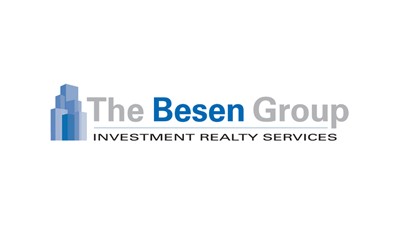Everything You Need To Know About NYC’s Retail Condo Craze

The retail condominium market has evolved since 2010. Back then, it was bottoming out and people were only selling retail spaces to pay off their debts.
Now, Besen & Associates director and rising investment sales star Ishan Chhabra (pictured in front of the new retail condo at the base of 400 Park Ave South, across from the Besen offices) says, retail condominiums are providing family offices, institutional investors and retailers alike with greater, more lucrative opportunities and an alternative to the chaotic housing and office markets.
And with good timing, too. Retail is hotter than ever with the Rent Guideline Boards’ recent restrictions on landlords for stabilization product, rising land costs and unprecedented tourism. Developers and owners are eager to take advantage of the low vacancy rates and high demand for prime retail. But to truly learn everything we could about this trend, we sat down with Ishan and picked his brain about why retail condos are the biggest thing for NYC retail.
Who’s Buying and Why?

There are four sources of retail condo demand. First, you have retailers seeking flagship locations in NYC “from a pure marketing and cachet play,” as Ishan puts it. A good example would be Zara (pictured), which bought a retail condo at 503 Broadway in Soho for $280M early last year.
Second, there are smaller retailers who buy spaces because they’re sick of getting kicked out of retail locations due to rising rents and landlords looking for a higher-tier tenant. These tenants can a huge appreciation of value that they could never find in a rental space.
Third, you have multifamily investors looking for properties unhindered by rent regulations and who only want to deal with one tenant.
Finally, but most importantly, you have a whole swath of foreign investors drawn in not only by the allure of owning real estate in Manhattan, but by the economic advantages of retail assets with tax abatements, shared common charges, low maintenance, highly capitalized foreign tenants and stable yet higher yields.
“Due to increasing foot traffic, accessibility to transport, social and geopolitical stability, New York City's attracting some of the largest retail investment nationally,” Ishan tells Bisnow.
But this high demand has caused rental rates on high street level retail to outpace housing and office rents, making them unfeasible for these four groups. In order to meet this demand and counterbalance rising costs, developers have to do something to add a more consistent and more stable supply to the market.
What Are Developers and Brokers Doing?
With startling rise in demand, developers and buildings are looking to maximize the value of their retail space, but Ishan believes developers and builders are taking different courses of action.
Given rising land costs, low interest rates and developers’ high basis, for example, many family office builders are choosing to hold on to their positions of newly constructed retail assets and enjoy higher yields. Preferring to refinance the retail condominium component, many of these firms would only consider a sale upon lease expiration.
Institutional builders may have mandates to trade their retail on new construction, while institutional developers are partnering up with retailers or retail investment groups to structure a retail asset from the initial stages of planning.
Both groups, however, are working hard to make sure banks and deep-pocketed investors feel comfortable and confident when lending to the projects.
What Are the Benefits and Dangers?
“Both sides of the equation benefit from the rise in retail condos,” Ishan says. “Sellers are realizing a higher value in retail asset sales, as opposed to individual residential condominium sales, while buyers see less management intensive operations as a huge factor to increase demand.”
Depending on location, these condos could easily be the biggest appreciating asset in a user’s portfolio. In fact, sometimes these retail spaces can appreciate more than the business itself, which is why many users are willing to pay 10% to 15% more for a retail condo than investors, according to the Commercial Observer. The Observer also mentions that retail condos afford international investors an investment that doesn’t weigh them down with constant tenant and regulation concerns.
But, as rents continue to grow and the housing market continues to be uncertain, investors desperate to diversify asset classes might be more flexible in accepting lower yields, taking longer hold positions or moving to emerging markets should prices continue to exponentially rise, Ishan warns. Prices are already pretty steep, with a retail condo at 440 Atlantic (pictured) closing for $1,100/SF last year.
“The emergence of private equity funds in the retail markets have carved a lucrative business model of raising foreign capital from less stable markets and high fee structure compensation packages, but some private equity funds and institutional investors are diversifying their holdings by moving into the Miami, San Francisco, Chicago and Los Angeles markets.”
What Does 2016 Hold for Retail Condos?

This doesn’t mean you need to start worrying about retail condos now, however, as Ishan is still optimistic about the future. With the Fed still on the fence about raising rates, uncertainty amongst the rent stabilization and RGB guidelines and a growth in tourism and employment in the labor force, investors are still increasing their demand for retail product. In addition, geopolitical and social stability in New York City is enabling for growth while remaining a safe bet for investors across the spectrum.
“The overall appeal to retailers in New York City and a historically strong market place are all positive signs,” Ishan says. With a deal for a Bowery retail condo in contract and set to close soon, he says he’s eternally bullish on retail condos as a valuable asset class overall.
To find out more about our Bisnow partner, click here.



